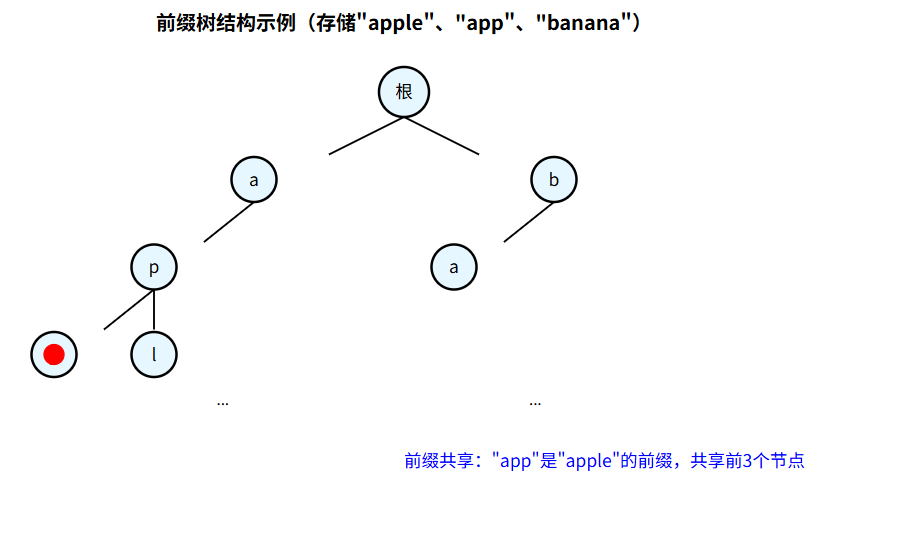前缀树(Trie,又称字典树或单词查找树)是一种专为字符串处理设计的树形数据结构,由 Edward Fredkin 于 1960 年提出。它通过共享字符串的前缀来高效存储和检索字符串集合,在 autocomplete(自动补全)、拼写检查、IP 路由等场景中有着广泛应用。
前缀树的基本概念与结构
定义与特点
前缀树是一种多叉树,每个节点代表一个字符串的前缀,其特点如下:
- 节点结构:每个节点包含一个布尔值isEnd(标记该节点是否为某个字符串的结尾)和若干个子节点(通常对应 26 个英文字母,也可扩展到其他字符)。
- 根节点:为空节点,不存储任何字符,是所有字符串的起点。
- 前缀共享:具有相同前缀的字符串会共享前缀部分的节点,显著减少存储空间。
- 高效操作:插入、查找、前缀匹配的时间复杂度均为O(L),其中L是字符串的长度,与字符串总数无关。
结构图示
以下是存储字符串 "apple"、"app"、"banana" 的前缀树结构:

前缀树的核心操作
插入操作
思路:从根节点开始,逐个字符处理字符串:
1. 对于当前字符,若节点的子节点中不存在该字符,则创建新节点。
2. 移动到对应子节点,继续处理下一个字符。
3. 字符串处理完毕后,将最后一个节点标记为结尾(`isEnd = true`)。
Java 代码:
class TrieNode {
public TrieNode[] children; // 子节点(假设只包含小写字母)
public boolean isEnd; // 是否为单词结尾
public TrieNode() {
children = new TrieNode[26]; // 26个小写字母
isEnd = false;
}
}
public class Trie {
private TrieNode root;
public Trie() {
root = new TrieNode(); // 根节点为空
}
// 插入字符串
public void insert(String word) {
TrieNode node = root;
for (int i = 0; i < word.length(); i++) {
char c = word.charAt(i);
int index = c - 'a'; // 计算字符索引(0-25)
if (node.children[index] == null) {
node.children[index] = new TrieNode(); // 新建节点
}
node = node.children[index]; // 移动到子节点
}
node.isEnd = true; // 标记单词结尾
}
}查找操作
思路:从根节点开始遍历字符串的每个字符:
- 若当前字符的子节点不存在,返回false。
- 移动到对应子节点,继续处理下一个字符。
- 字符串处理完毕后,返回最后一个节点的isEnd(确保是完整单词)。
Java 代码:
// 查找字符串是否存在于前缀树中
public boolean search(String word) {
TrieNode node = root;
for (int i = 




 最低0.47元/天 解锁文章
最低0.47元/天 解锁文章



















 被折叠的 条评论
为什么被折叠?
被折叠的 条评论
为什么被折叠?










